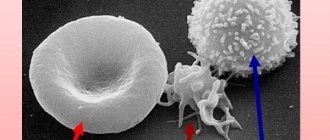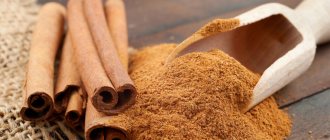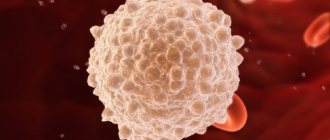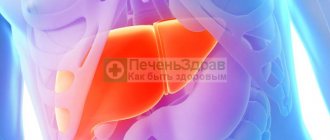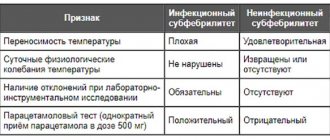Sweating is our body's normal response to rising temperatures: you feel hot, you sweat, and your body cools down. On average, our body produces a small amount of sweat, with the exception of active physical activity or very hot temperatures. Nevertheless, excessive sweating is a problem that unites a large number of people, regardless of environmental conditions. What are the main causes of increased sweating, and how to deal with this unpleasant phenomenon?
What is sweating?
Sweating is a very important function performed by the body of every person. During this process, a special secretion is released, as well as metabolic products. It is also worth considering that sweating performs a thermoregulatory function. That is, your body will begin to sweat if the ambient temperature is too high, as well as with excessive physical activity. This phenomenon is considered absolutely normal. By the way, our sweat glands work constantly, without interruption, even when we are in optimally comfortable conditions or sleeping. But if your sweat glands are working excessively for no apparent reason, then you need to think about the state of your health. In this case, there may be very serious disorders in your body.
As you know, sweat itself has absolutely no odor. But when bacteria begin to multiply in it, you can smell an extremely unpleasant aroma. Pathogenic microorganisms will not only cause an unpleasant odor, but can also become the basis for the development of inflammatory processes in the body.
Clinical manifestations
Sweating (hyperhidrosis) often develops in limited areas of the body (sweating legs or arms, armpits, perineum). The skin is moist and cold to the touch; there are signs of acrocyanosis (bluish tint) on the hands and feet. Sweating is often accompanied by pyococcal (bacteria) and yeast (fungal) skin lesions.
Sweat itself has no odor; the familiar unpleasant odor is imparted by bacteria that feed on sweat on the skin and multiply due to this. This unpleasant odor, observed in people who have poor personal hygiene, is called bromidrosis or osmidrosis. An unpleasant odor can occur both due to the decomposition of sweat by bacteria, and due to the release of substances with a pronounced odor (sulfur, ammonia, garlic, tobacco, etc.), as well as due to menstrual irregularities in young women, with diabetes diabetes, some dermatoses (pemphigus, vegetative syphilides). Often such conditions require consultation with a doctor and treatment.
Chromydrosis is manifested by discoloration of sweat in people who come into contact with cobalt, copper, iron and other chemicals. People with hyperhidrosis are caught in a vicious cycle—they sweat, worry about it, and sweat more because of it.
Main types of hyperhidrosis
Some representatives of the fairer sex sweat intensely in their sleep. If this happens to you, be sure to pay attention to the conditions in which you sleep. The room may be very stuffy, or your clothes and bedding may be made of synthetic materials. In this case, it will be very easy to eliminate increased sweating in women.
Increased sweating can have several locations on the female body. Depending on this, several types of this disease are distinguished. Let's look at them in more detail:
- plantar hyperhidrosis is characterized by increased sweating that occurs in the palms;
- with palmar disease, the feet sweat very much;
- but the axillary type of the disease is characterized by increased sweating in the armpits.
These types of hyperhidrosis are quite common. Much less often, increased sweating in women occurs throughout the entire body.
Prevention
Prevention of sweating involves eliminating all negative factors that can cause this unpleasant process. The same rules will help eliminate hyperhidrosis caused by external influences. Prevention of sweating:
- Dress appropriately for the weather. In this case, it is advisable to use clothes made from natural materials;
- Don’t overeat before bed and follow the rules of nutrition;
- Don't allow yourself to gain extra pounds. Sports and proper nutrition will help with this;
- Maintain personal hygiene. Remove armpit hair. Shower once or twice a day, and wash your underwear daily;
- Do not take medications without a doctor's prescription.
These simple rules will help prevent the occurrence of secondary hyperhidrosis. Therefore, they are worth following.
https://youtu.be/dm1C_Iurryo
Sweating armpits in women is a fairly common problem. It may be associated with natural hormonal changes and go away on its own. However, to rule out the presence of diseases, if signs of hyperhidrosis appear, you need to be examined by a doctor.
The right choice of clothing is the key to good health
One of the main reasons for excessive body sweating is the wrong choice of clothing. Of course, all representatives of the fair sex try to take care of their bodies and perform hygiene procedures correctly. However, for some reason, many people simply forget about the correct selection of clothes. The way the dress you buy looks is very important. However, what is even more important is what material it is made from. Synthetic fabrics are very harmful to the human body. They do not allow the skin to breathe, which means the body’s thermoregulation is disrupted. Very often, women suffer from increased sweating in the armpits when wearing fabrics such as acrylic, viscose or polyamide. Of course, blouses made from synthetic materials look amazing, but at the same time they have a detrimental effect on your health. Imagine what will happen to your body if it does not breathe for twelve hours.
Physiotherapeutic methods
Physiotherapeutic procedures provide a good therapeutic effect. For example, hydrotherapy and the use of contrast showers and pine-salt baths have a general strengthening effect and reduce the excitability of the nervous system.
Electrosleep, a therapeutic method based on the effect of low-frequency impulses directly on the brain, has a particularly beneficial effect. Electrosleep sessions have a pronounced sedative effect, inhibit nervous excitement and strengthen the autonomic system.
Another common method is therapeutic electrophoresis, during which problem areas are exposed to a constant electric current in combination with medications. This effect causes temporary dehydration of the area with increased sweating, and the active components of the drugs penetrate the skin and prevent sweat production for up to 20 days.
https://youtu.be/OPh24_3Z7YQ
Excessive emotionality
Increased sweating in women, the causes of which can be very diverse, often occurs in the fair sex, who have a very strong emotional reaction to certain life situations. For example, very often speaking in public leads to excitement, and this in turn causes emotions, which lead to excessive sweating. Some women are very shy, so they begin to worry when everyone's attention is paid to them. This situation can also lead to the fact that the sweat glands begin to work more actively.
Increased sweating in women, the causes of which are described in detail on this resource, can begin in childhood. For example, if a girl was very worried when the teacher at school called her to the blackboard, and this started to sweat a lot, then this problem will only worsen with age.
In fact, this problem is not so easy to solve. The first thing you need to learn to do is control yourself and your emotions. If you can’t come to this on your own, be sure to consult a psychologist, he will help you cope with excessive emotionality and solve the problem of excessive sweating.
How to treat axillary hyperhidrosis
The first recommendation most often given to people suffering from excessive sweating is to use an antiperspirant deodorant. It slows down the work of the sebaceous glands, reduces the level of sweating and often at the initial stage of hyperhidrosis blocks its further development.
Despite the fact that the use of deodorants is also recommended for people with normal sebaceous glands, this method is not always effective. Firstly, deodorant cannot be used on every part of the body. And secondly, most cases require different treatment.
Drug treatment
If excessive sweating of a woman’s armpits is caused by nervous overstrain or many stressful situations, she is recommended a course of sedatives or tinctures. In especially severe cases, tranquilizers are indicated for use.
In addition, there are medications that directly affect the body's internal secretion system and reduce the level of sweating. However, such drugs often have a number of side effects, since the effect on the sympathetic nervous system entails a number of additional consequences, in addition to regulating the functioning of the sebaceous glands.
In some cases, it is recommended to take B3 vitamins.
That is why a detailed consultation with a doctor is recommended, since choosing a treatment method on your own is not only difficult, but also dangerous. Moreover, certain drugs should never be taken without a direct prescription from a doctor.
Cosmetological treatment
Botulinum toxin (also known as Botox) has gained a place of honor in the field of cosmetology, but dermatologists have also appreciated its many benefits. Injections of this drug help reduce sweating in various areas of the body, including the armpits.
Girls and women usually have a positive attitude towards this method of combating underarm sweating and more; Botox does not scare them.
Before the procedure, the level of sweating is determined. To do this, an iodine-starch test is performed, on the basis of which a decision is made on the volume and location of botulinum toxin injection. Using a special marker, the doctor places on the skin the points where the injections will be made.
By filling the subcutaneous fatty retina, Botox blocks nerve impulses to the internal secretion glands. This is why a test is needed before the procedure to establish the level of the maximum permissible rate of sweating, since the body needs it.
The disadvantages of this method are that the procedure is expensive and also that it needs to be repeated every six months.
Surgical intervention
Liposuction and curettage are the most common surgical methods for treating excessive underarm sweating in girls. Both are characterized by the removal of subcutaneous fat, only in the first case it is sucked out, and in the second it is scraped out with a curette spoon. Due to these manipulations, some of the sebaceous glands are removed, and the connection with the sympathetic system of the remaining ones is destroyed.
Lifestyle correction
If increased sweating in women is caused by psychological reasons or harmful household habits, the best solution is to change your lifestyle. For example, if the reason for excessive sweating of the armpits lies in neglect of hygiene, you should take a shower more often, use deodorant, and if the latter is not suitable, replace it with another. If hyperhidrosis occurs as a result of poor nutrition, try adjusting your diet, preferably with the help of a nutritionist.
The cardiovascular system has abnormalities
It's no secret that very often disorders of the cardiovascular system can lead to problems such as increased sweating in women's armpits and other parts of the body. Most often, such a disease can begin to develop in hypertensive patients. In this case, increased sweating may be the very first symptom of such a serious disease. Please note that hypertension is a disease that develops very slowly and gradually. You may feel completely normal until a certain point comes. If you notice that you are starting to sweat for no particular reason, the first thing you need to do is contact a cardiologist. This is especially true for women who are overweight and about forty to forty-five years old.
Why increased sweating in women is a question that concerns many representatives of the fair sex. There can be many reasons. And one more of them is the presence of vegetative-vascular dystonia. This disease is much more common in women than men, and age does not matter. The first symptoms of such an illness will be low body temperature, as well as very frequent dizziness. Vegetative-vascular dystonia worsens when the fair sex begins menstruation. The patient may experience chills, which will be accompanied by a phenomenon such as increased sweating in women. At night, this phenomenon can also be observed, and it will especially intensify if a woman sleeps in uncomfortable conditions. Your hands, feet and armpits will sweat the most.
Another cause of excessive sweating is hypotension. This disease most often manifests itself in the morning, immediately after the woman wakes up. In this case, low pressure will be present until the female body adapts to the vertical position. Notice the women who can't get to work until they've had a cup of coffee. This phenomenon indicates low blood pressure. Excessive sweating may indicate that your blood pressure has dropped significantly.
Very often, excessive sweating is a signal that indicates the presence of serious diseases in the body. Therefore, be sure to go to the hospital for a diagnosis. After all, problems with the cardiovascular system can lead to death.
Diagnostics
You need to remember one simple rule - no one makes a diagnosis of “hyperhidrosis” based solely on the fact of wet armpits. To identify the presence of pathology and, based on these data, to prescribe a medical examination of the patient, it is necessary to perform several diagnostic techniques.
The simplest method is to apply a special powder to human skin that changes color upon any contact with sweat . Of course, the armpit area should be thoroughly washed and wiped dry before this procedure. After some time (from several minutes to several hours), the doctor assesses the size of the “sweat spots”: if their diameter is no more than five centimeters, then the intensity of sweating is normal, and there is no question of the presence of hyperhidrosis.
Only in the case when the blurred spots of the diagnostic powder that reacted with sweat are larger than normal, can the doctor make this diagnosis. In this case, as mentioned above, the patient is prescribed a full diagnostic examination in order to identify primary pathologies.
Presence of infections in the body
Increased sweating of the head in women sometimes indicates the presence of infections in the body. This includes the common cold, flu, sinusitis, pneumonia, and any other infectious diseases. The presence of infections in the body leads to inflammatory processes in the body, and this causes increased body temperature. The main symptoms of such diseases are chills, weakness, aching joints, and sometimes increased sweating. Moreover, it is precisely this that is the protective reaction of the human body to the presence of infection in it.
Please note that many infectious diseases can be present in the body in a latent form. The woman will notice a decrease in performance and weakness, but such conditions will be short-lived. Increased sweating will indicate that an infection is hiding in the body. You will notice how your arms, legs, armpits, and also your forehead become damp. If you sweat excessively at night, this may indicate that you have tuberculosis.
Increased sweating in women's armpits (treatment will be described below) can be observed during poisoning. Moreover, such a process will be completely natural and normal, since toxic substances can also leave the body along with sweat.
Diseases that cause sweating
Sometimes excessive sweating can be caused by serious pathologies occurring in the body. Such situations require medical intervention and pose a serious threat to health and even life. Diseases that cause hyperhidrosis in the armpits:
- One of the possible problems is diseases “on the female side”. Such pathologies always cause hormonal imbalances;
- Other endocrine system disorders can also manifest as secondary hyperhidrosis. For example, this disease is typical for people who suffer from diabetes;
- Sweating is also characteristic of infectious and viral processes occurring in the body. However, in this case, not only the armpits sweat, but the whole body;
- Excessive sweating can also occur with food or alcohol poisoning. In this case, the armpits sweat especially heavily;
- A similar unpleasant symptom manifests itself in liver disease. After all, this organ is involved in the production of female hormones;
- The kidneys perform the function of removing excess fluid and harmful substances from the body. If pathological processes develop in an organ, part of its functions are taken over by the armpits;
- Diseases of the rheumatoid type also lead to sweating. This symptom is especially characteristic of the later stages;
- An increase in temperature is another cause of sweating. With the help of the sweat glands, the body tries to restore thermoregulation;
- Excess weight is the most common cause of excessive sweating. Almost all obese people have hyperhidrosis;
- Neurological diseases also lead to sweating;
- Also, a similar sign can occur with malignant and benign tumors.
With such diseases there are usually other symptoms. However, sometimes they are not very pronounced and do not attract attention. That is why, if signs of hyperhidrosis occur, you should visit your therapist.
Female causes of hyperhidrosis
What to do if sweating is increased? The causes and treatment in women depend on many factors, so the specialist must find an individual approach to each patient.
In fact, very often increased sweating does not indicate the presence of any problems. This phenomenon can begin to bother a woman during hormonal changes, for example, during puberty, or menopause. During such time intervals, the female body goes through a process of adaptation and restructuring, so there is nothing wrong with sweating. Very often, sweating indicates that a girl is pregnant, so be sure to take this fact into account.
Also, a representative of the fair sex may sweat a lot during menstruation. You should consult a doctor only if the problem is very severe and interferes with normal life activities. In this case, the gynecologist may prescribe you to undergo a course of treatment with drugs containing hormones.
Possible reasons
Sweating is a natural feature of the body. It cleanses, monitors hydrobalance, and is responsible for thermoregulation. In a situation where the amount of discharge significantly exceeds the established norm, a strong feeling of discomfort appears, and hyperhidrosis occurs - a syndrome of excessive sweating. If a man with increased sweating does not yet react very sharply to this problem, then for women hyperhidrosis is a strong blow to self-esteem, the inability to exist normally in society. This phenomenon provokes the development of shame, complicates communication with the opposite sex, and can drive depression.
There are many reasons that cause excessive sweating, we will look at the main ones.
- Hyperthyroidism is excessive secretion of thyroid hormones from the thyroid gland. Profuse sweating develops due to the acceleration of chemical processes.
- Oncology, in particular liver cancer, leukemia, carcinoid tumor, can be manifested by increased sweating.
- Taking certain medications, such as antibiotics, blood pressure medications, nutritional supplements, and psychiatric medications. In such a situation, you need to inform your doctor about the occurrence of a side effect.
- Impaired glucose metabolism. This includes hypoglycemia and diabetes mellitus.
- Menopause. About 75% of women during menopause experience hot flashes on a regular basis; sweating is a consequence of reduced estrogen levels. If you suffer from excessive sweating at night, this is probably the reason.
- Psychiatric illnesses. Increased anxiety, constant stress, anxiety keep the nerves on edge, cause excessive sweating, and high levels of adrenaline are released into the blood.
- The result of excessive physical activity. In this case, sweating is normal. This happens due to the fact that when performing physical work, the muscle mass produces more heat, and the body tries to get rid of it by bringing it to the surface of the skin.
- The period of pregnancy, as well as the first months of the postpartum period. An increase in the level of progesterone is characteristic, as a result of which the functioning of the sweat glands increases and the amount of secretion increases. It is important to understand that excessive sweating is temporary and you do not need to take any action.
- Having excess weight. The appearance of hyperhidrosis in this case is a normal reaction, since the amount of energy needed to maintain the vital functions of the entire body weight increases.
- Weak immunity. Hyperhidrosis occurs when the body is exhausted. Typically, the smell of sweat changes, chronic ailments worsen, and the appearance of the skin worsens.
- Genetic predisposition. It is a consequence of a violation of the thermoregulation system.
- Presence of heart failure. In such a situation, there is increased sweating throughout the body, and the following symptoms may also be present: cold feet, palms, discoloration of the face, dizziness, difficulty breathing, problems with blood pressure.
- Vegetovascular dystonia. As a special case of cardiovascular disease.
- Osteochondrosis. If you have this reason, then in addition to headaches you may experience: tachycardia, nausea, fever, tremors in the body.
- Presence of tuberculosis. Excessive sweating is one of the first signs of this disease, and it can appear without a jump in temperature.
- Poisoning. When a person is poisoned by something, the body tries to remove toxic substances through sweat. In such a situation, the following may also be present: vomiting, diarrhea, dizziness, fever.
- HIV infection. Excessive sweating can occur during the incubation period of the disease, as well as during the spread of the disease. May appear with short-term withdrawal of specialized drugs.
- Parasitic infection. Parasites secrete waste products that have a toxic effect on the host’s body. Along with profuse sweating, there may be pain in the muscles, joints, and constipation.
When sweating feet, the following predisposing factors are distinguished:
- wearing shoes not made from natural materials;
- tight shoes;
- wearing synthetic socks;
- lack of foot care;
- the presence of a dermatological disease or fungus;
- dysfunction of the nervous system.
Sweaty palms can be caused by:
- pathology of the endocrine system;
- severe stress;
- an increase in the number of sweat glands (this feature is inherited);
- metabolic disorders;
- HIV infection;
- tuberculosis.
The whole body is drenched in sweat when:
- physical activity;
- heredity;
- infections;
- pathologies of the endocrine system;
- mental illnesses.
Excessive sweating under the arms is often caused by:
- severe fear, aggression;
- deviation in metabolic processes;
- presence of tumor formation;
- the presence of more sweat glands;
- menopause;
- pregnancy;
- pathology of the endocrine system;
- diabetes mellitus
Sweating of the head is most often observed with:
- constant stress;
- allergic reaction;
- changes in hormonal levels;
- oncology;
- infectious disease;
- smoking and drinking alcohol.
Antiperspirant against excessive sweating for women
Ratings of products such as antiperspirants can be found on the Internet, but before you do this, you need to figure out which drug is best for you. An incorrectly selected product will simply clog your pores and lead to the proliferation of a large number of bacteria. This way, not only will you not eliminate excessive sweating, but you will also become tired of dealing with the unpleasant odor.
There is a huge selection of different antiperspirants. Manufacturers produce them in the form of spray, cream, powder, and so on. But the release form is not the most important thing you should pay attention to.
An antiperspirant against excessive sweating for women can have cosmetic and therapeutic effects. Cosmetic antiperspirants will not completely relieve you from excessive sweating. Therefore, they are recommended for use by women whose hypohidrosis is not very noticeable. Such remedies will have a very short-term effect.
But medical antiperspirants have a stronger effect on the body. However, it is recommended to use them only as prescribed by a doctor, so as not to harm the body even more. This remedy cannot be used very often. Do this once every three to four days, or better yet, just once a week. If you use such a product regularly, it can lead to the fact that the sweat glands atrophy completely and stop producing sweat altogether. Let's look at the drugs most often recommended by doctors: Maxim, Orban, Klima, and others.
Treatment with traditional methods
If hyperhidrosis is caused by external factors, then women can get rid of excessive sweating using traditional methods. In cases where hyperhidrosis manifests itself due to internal diseases, the advice of herbalists is used as additional therapy.
- Using mint with lemon balm - decoctions are made from medicinal herbs. They can be added to baths or taken as tea. Mint and lemon balm help remove excess water from the body, strengthen blood vessels and cope with excessive sweating. Take both herbs in equal quantities, mix and measure 50 grams. Add a liter of cold water to them, boil the broth, cook for a quarter of an hour over low heat. Wait until the infusion has cooled, strain and add to the bath.
- Use of oak bark - the medicine can be bought at any pharmacy. The bark helps with severe sweating of the feet. Brew 100 grams of powder with a liter of boiling water, place on the stove and cook for 20 - 25 minutes over low heat. Make a foot bath or add a decoction to a regular bath. Sweating will decrease after the first procedure. The second way to use oak bark is faster and easier. Pour the powder into clean socks and wear them overnight. Don't forget to wash your feet in the morning.
- Baking soda helps with excessive sweating . It can even be used instead of deodorant. Wipe the problem area with powder or make a decoction (1 teaspoon of soda per glass of water). Apply it regularly to your legs, armpits, palms, etc.
- Lemon can cope with hyperhidrosis . It has antibacterial properties. Rub a slice of citrus over problem areas or place a thin slice of lemon on the skin and hold for 2–3 minutes.
- Sage has been used for centuries to combat sweating. The most effective results are shown by a mixture of medicinal herbs: sage, horsetail and valerian. Take them in a ratio of 8:2:1, respectively. Pour a glass of boiling water over the mixture and leave for at least two hours. The decoction is taken orally in the morning and evening. Dosage – 100 milliliters once.
- Using vinegar – Both apple cider vinegar and wine vinegar will work. Dilute it with water, proportion 1 to 5. Lubricate the solution on your feet or armpits.
- Chamomile flowers are a good anti-inflammatory and antiseptic. Prepare a solution: pour six tablespoons of herbs with two liters of boiling water, leave for an hour. Then add two large spoons of soda. Take baths with the addition of the resulting medicinal solution. But don't forget to strain it first.
- Glycerin solution - mix this component with alcohol and lemon juice. Mix the ingredients thoroughly. Store the product in a dark glass bottle and treat problem areas with it. After two weeks, sweating will decrease significantly.
Treatment of hyperhidrosis
In fact, there is no exact method for how to cure excessive sweating in women, because the causes of this phenomenon can be very diverse. Please note that it is very important to understand the exact reason for this illness, so be sure to consult a doctor in order to eliminate this cause.
Very often, experts recommend that women take medications containing calcium. It is this microelement that can lead to a decrease in body temperature, and therefore to a decrease in the level of sweating.
Powders containing methenamine and boric acid also have a good effect. Experts recommend that women try Botox injections and laser treatment. However, such procedures have a fairly high price.
Treatment of excessive sweating
In the traditional treatment of primary hyperhidrosis, the following methods are used.
- Tablets (anticholinergic drugs) that inhibit the activity of the sweat glands. They may cause side effects (constipation, dry mouth, etc.), and have contraindications (glaucoma, prostatic hyperplasia, etc.).
- Antiperspirants with aluminum chloride, which temporarily block the sweat glands, reducing sweat production. The product is applied to dry, clean skin before bedtime. May cause slight skin irritation if used on the face or applied immediately after shaving.
- Botulinum toxin (Botox) injections. About 12-20 injections are given in the area of increased sweating to block the brain signals that it sends to the sweat glands. After 3-6 months, treatment must be repeated. The injections may cause side effects (redness or itching, nausea, headaches, muscle weakness).
- Iontophoresis. In iontophoresis, the hands and feet are immersed in water through which a weak electric current is passed. A wet pad is applied to the armpits. The procedure, designed to block the sweat glands, is painless, but may cause skin irritation and minor discomfort. Requires 2-4 sessions per week, 20 minutes each. Further, the intervals between procedures increase to 1-4 weeks.
- The surgical technology of curettage is the removal of part of the sweat glands through small punctures. The procedure is performed under local anesthesia.
Primary hyperhidrosis is treated by a dermatologist. In case of secondary sweating, for a comprehensive examination and to establish the root cause of excessive sweating, you need to consult a therapist. After diagnosis and treatment of the underlying disease, the accompanying symptom of excessive sweating completely disappears.
conclusions
It is very important to eliminate the causes of such an unpleasant phenomenon as increased sweating in women. Treatment of this disease can begin only after its causes have been identified. Therefore, be sure to consult a specialist and undergo a full examination. After all, such an unpleasant phenomenon may hide more serious problems. For example, you may have a serious infection lurking, or a specialist may discover a serious cardiovascular disease. So take charge of your health today. Start eating right, exercising, getting rid of bad habits, and you will see how your health will improve significantly. Be healthy and take care of yourself, and don’t forget that excessive sweating is not a death sentence.
How to determine if sweating exceeds the norm
Moderate sweating of the armpits is a completely natural process. It occurs in absolutely every person due to the increased concentration of sweat glands in this area. In addition, the location of this organ is also important. Therefore, it is necessary to distinguish normal sweating from pathological one.
In hot weather, a woman's sweating increases. Therefore, if under such conditions there is a large release of liquid, then this is quite natural. This phenomenon is also normal during physical activity. Pathological sweating can be determined by several signs. This condition causes women a lot of discomfort.
Signs of excessive sweating:
- Fluid in the armpits is released in large quantities. It flows down your hands, and the drops of sweat that appear do not evaporate;
- An unpleasant odor occurs. Moreover, it is so strong that it is noticeable to others;
- Deodorants and antiperspirants don't help. When using them, the manifestations of sweating do not disappear;
- Even with absolutely normal temperature conditions, as well as in a calm state, increased sweating occurs;
- Large sweat stains appear on clothes. You have to choose sweaters and T-shirts in colorful shades to hide it.
Types of hyperhidrosis
According to the general classification, the following criteria for dividing pathology into types are distinguished:
- According to the degree of severity, they are distinguished:
- mild form, when sweating causes minimal discomfort, and sweat spots do not exceed 10 cm in diameter; medium form, when a strong odor is noticeable, large drops of sweat are visible, and the size of the sweat spot reaches 20 cm;
- severe hyperhidrosis, when sweat flows like hail, and wet spots on clothing have a diameter of more than 20 cm.
- By location they are distinguished:
- local, when a certain area of the body sweats: armpits, palms, feet, face;
- generalized, when all parts of the body sweat.
https://youtu.be/AWRoHqamGdE
- By causative factors:
- primary pathology, if increased sweating is a consequence of congenital features of the physiological structure of the sweat glands;
- secondary pathology, when excessive sweating is caused by another, more severe disease;
- compensated pathology, when sweating is provoked by previous operations on a certain area of the body.
How to eat to avoid sweating
And this is a really important aspect. Women, like men, however, often sin with the love of eating tasty and plentiful meals at night. For some time, this habit does not result in problems. But at some point it will definitely lead to obesity, digestive problems, insomnia and night sweats. If you drink a glass of kefir at night or eat an apple, nothing like that will happen.
High sweating definitely follows alcoholic libations. Moreover, it is not limited only to night time. Having drunk a fair amount of strong alcohol the night before, you will feel like you are sweating a lot in the morning.
You should also avoid fatty, spicy, hot, smoked and pickled foods in the evening. This is not the best food for the gastrointestinal tract, and it causes sweating at any time of the day, but such an evening meal is especially fraught with increased sweating.
https://youtu.be/qIw6SjRkcP0
How to deal with increased or severe sweating under the arms?
The main goal of treating hyperhidrosis is to normalize the function of the sweat glands. There are many ways to solve the problem.
Creams and ointments
TOP 5 best external products:
Teymurov's pasta .
This cream contains zinc oxide, talc, lead acetate, boric acid and salicylic acid. It is applied to the affected area up to 3 times a day. The average course of treatment is 20-22 days. The paste effectively treats sweating, dries and disinfects the skin. Contraindicated in pregnancy, skin inflammation, kidney pathologies and allergies to any of the components. Disadvantages - leaves a whitish coating and can cause a burning sensation. The average price per tube is 37-39 rubles.Lassara cream paste .
The main ingredients are zinc oxide, salicylic acid, petrolatum and starch. The product has a drying, antibacterial and anti-inflammatory effect. It is applied to the skin 1-2 times a day for 18-20 days. The paste has a greasy consistency, which makes absorption difficult. The average price is 27-28 rubles.Formagel .
The basis is the active substance – formalin. The ointment is applied once for 35-40 minutes, after which it is thoroughly washed off. Repeated use is carried out after 9-10 days. In severe cases of hyperhidrosis, the composition can be applied for 3 days (once a day). The main advantage is how long the effect lasts. The average price is 205 rubles.Lavilin .
This is a deodorant cream that can stop sweating for a long time. It is based on extracts of medicinal plants, which ensures harmlessness. The product is applied once, and its effect lasts from 5 to 10 days, depending on the degree of hyperhidrosis.The cream is quite expensive, but is highly effective. The average price is 720 rubles.
Nepotoff .
The cream is available in 2 versions - for men and women. It is not recommended for use by children and pregnant women (learn about the causes of excessive sweating in women and children and how to deal with the disease). The product is applied to the skin and gently rubbed. Apply once a day for 3-5 days. The effect lasts for more than 2 weeks.The average price is 1200 rubles.
Ointments and creams are quite safe, but they can also cause side effects. They are sold in pharmacies without prescriptions, but they should be used after consulting a doctor.
Read more about how to treat hyperhidrosis with tablets and ointments here.
Folk remedies for treatment
TOP 3 recipes:
- Chamomile infusion . Chamomile flowers (2 tablespoons) are crushed and poured with boiling water (0.7 l). The composition is infused for 1-1.5 hours. Before use, 1 tablespoon of soda is added to it. The axillary area is treated 3-4 times a day for 2-3 weeks.
- Alcohol tincture of horsetail . The grass is dried and crushed. The raw materials are filled with alcohol or vodka at the rate of 1 tablespoon of herbs per 50 ml of alcohol. The product is infused for at least 10 days in a cool place. Before use, dilute with cooled, boiled water in a ratio of 1:2. Apply to the skin 2 times a day for 5-8 days.
- Infusion of oak bark . The raw materials are crushed and infused in boiling water (1 teaspoon per 200 ml) for about 1 hour. Before use, lemon juice is added in a ratio of 1:3. The affected area is wiped with infusion up to 4-5 times a day.
You can learn how to treat hyperhidrosis at home here.
How to remove it surgically?
The most effective surgical methods:
- Endoscopic sympathectomy (ETS) .
This method is considered one of the most effective. The operation involves making 2-3 small incisions in the axillary area, through which an endoscope with a miniature camera and a special surgical instrument are inserted. Under the control of a video camera, the destruction of the sympathetic trunk or the pinching of nerve fibers with clips is carried out. The operation is performed under general anesthesia. The main disadvantage is the risk of relapse. The cost of ETS in Moscow and St. Petersburg is 25,000-30,000 rubles. - Liposuction .
It is based on extracting fat from the axillary area, along with which the sweat glands are automatically removed. When using the mechanical method, special pumps are used. After the operation, minor complications are possible, but in general it is a minimally invasive technology. The average price of such treatment is 20,000-22,000 rubles. - Curettage .
The operation consists of scraping (removing) the sweat glands in the most critical places. Before the procedure, an iodine-starch test is performed to determine the exact size and location of areas with hyperhidrosis. The technique allows you to remove up to 70% of all glands, which dramatically reduces sweating. The price of the operation is from 15,000 to 46,000 rubles, depending on the degree of damage and the volume of curettage.
How to get rid of it forever using physiotherapeutic methods?
Basic methods of physiotherapy:
- Laser therapy . The sweat glands are destroyed using a thin laser beam. In this case, the surrounding tissues are not damaged. The operation is performed under local anesthesia for 35-45 minutes. For serious pathologies, 2-4 sessions are required. The cost of treatment in Moscow and St. Petersburg averages 35,000-38,000 rubles.
- Iontophoresis . The essence of the method is the introduction of a medicinal, active substance using an electric current. This ensures effective and precise delivery of the product directly to the lesion. The duration of the procedure is 20-35 minutes. The number of sessions can reach 8-10. The average price of iontophoresis in large cities is 25,000-28,000 rubles.
- Botox injection . A highly toxic composition is injected using thin needles directly into the affected area. The product suppresses the sweat glands. The drug is administered once, and the effect lasts from 7 to 12 months, after which the procedure is repeated. The average price of Botox is 13,000-15,000 rubles.
If problems are detected in the functioning of the sweat glands, immediate action must be taken. This disease does not go away on its own, and if left untreated, it gets worse. What is the danger of hyperhidrosis of the palms, feet, head, face and how to deal with the disease - read on our Internet portal.
Physiology of sweat glands
Sweat secretion in humans and mammals is regulated by sweat glands, the number of which can reach 2.5-3 million, and the mass is approximately 25-40 mg. Sweat itself (or sweat fluid) is an aqueous solution of organic substances and salts, the secretion of which is necessary to maintain thermoregulation processes, cool the body and remove metabolic products from the body, as well as excess water, toxic substances, heavy metals and other harmful compounds.
The armpits are an area of increased sweating, as there are a large number of apocrine sweat glands located there, capable of secreting up to 0.6 liters of sweat per day. In hot weather, this figure can reach 1-1.2 liters: such hyperhidrosis is considered natural (physiological) and does not require any treatment other than increased hygiene. If a person constantly sweats, the skin in the armpit area is often damp and has an unpleasant odor, you should understand the reasons, since excessive sweating can be one of the initial signs of many pathological conditions, for example, endocrine diseases and vegetative-vascular disorders.
Note! In some diseases, human sweat glands can secrete up to 10 liters of sweat per day. The release of sweat fluid in such quantities negatively affects a person’s psychological state and reduces the degree of his social adaptation, therefore such hyperhidrosis is an indication for surgical intervention.
How to deal with wet armpits
If, with the arrival of summer, increased sweating in the armpits makes you blush in front of others, try using our recommendations.
- Take a shower every morning and evening. Sweat is 99% water, the rest is salts and waste. Sweat on a clean body does not leave an unpleasant odor. However, if you do not shower on time, bacteria begin to multiply on the surface of the skin, which becomes a source of stench.
- Be sure to wear clean and ironed shirts every day, even if you think yesterday's clothes are fine to wear again.
- After showering, dry your underarms thoroughly before applying any product. When buying an anti-sweat product, pay attention to its name - it should be an antiperspirant, not a deodorant. The first suppresses the activity of the sweat glands, and the second simply hides the unpleasant odor.
- When choosing an antiperspirant, give preference to medicinal products that have a more powerful composition. Among them are Dry Dry, Purax. Some of these medicated antiperspirants are so powerful that one application every few days is enough to keep your armpits dry.
- Wear clothes only made from natural fabrics - cotton, linen, etc. It should be quite spacious and comfortable. Dress according to the weather - do not allow yourself to overheat.
- If possible, try to stay in an air-conditioned room during hot weather.
- If you are embarrassed by wet spots, you can use special liners that are attached to the clothes from the inside. They are very similar to feminine sanitary pads - on one side there is Velcro, which is glued to the clothing at the level of the armpits, and on the other side there is a soft cotton surface that absorbs sweat and does not allow it to spoil the appearance of the clothing.
- In order for the pores to get used to the heat and react less to it, they need to be trained. Twice a day, give your armpits a contrast shower - water them with either cold or hot water. This will allow the capillaries to shrink and expand faster, adapting to the external environment.
- In the morning and evening after a shower, you need to wipe the skin of your armpits with antibacterial compounds - alcohol lotion, medicinal solutions.
These simple tips will help you cope with increased sweating if it is caused by external factors. If the reasons lie inside the body, you can try using safe and effective remedies that are sold in pharmacies.
What folk remedies should I use?
One of the working and simplest remedies against sweating is chamomile infusion. You will need a few spoons of flowers, which are poured into 2 liters of boiling water and left to brew for an hour. Then a couple of tablespoons of soda are added here, and the infusion can be used. They simply wipe their armpits as often as possible - up to 10 times a day or even more often.
An infusion of horsetail with vodka also saves the situation if your armpits sweat a lot. To do this, you need to mix horsetail with vodka 1 to 10 and leave for several days. Use the underarm rub up to three times a day.
Try also a decoction of oak bark with lemon juice, which should be mixed 1 to 1. Use the solution to treat the armpits 2-3 times a day. The secretion of sweat glands is suppressed under the influence of the product, and the skin smells like lemon.
If, in addition to heavy sweating, there is a problem with an unpleasant odor that even deodorants cannot cope with, it is probably due to impurities and toxins. Try cleansing your body by starting to drink herbal teas instead of the usual black or green.
Another non-standard folk remedy is a contrast shower for the armpits. Do it in the morning and evening, but reduce the temperature gradually. Aim for 6-7 cycles of ice and warm water. With a similar procedure, you will also strengthen your immune system and regulate the functioning of the sweat glands in the armpits.
Pregnancy and increased sweating
Sweating associated with pregnancy occurs in almost all cases. This phenomenon is explained by several reasons. Causes of sweating during pregnancy:
- Hormonal instability in the first three months of pregnancy is one of the factors leading to sweating;
- The amount of blood in the body increases. The need for water also increases. This leads to increased sweating;
- In the later stages, the enlarged uterus with the fetus begins to put pressure on the kidneys and other internal organs. This leads to a temporary deterioration in their work, which in turn causes increased work of the sweat glands;
- It is also worth noting the fact that when the fetus reaches a large size, the load on the body increases. Because of this, even simple physical work leads to increased sweating.
These factors are quite natural during pregnancy. Therefore, sweating during this period is absolutely normal. Sweating is also typical during breastfeeding. This is caused by a number of factors. Causes of hyperhidrosis in the postpartum period:
- Immediately after childbirth, estrogen levels drop. Usually this condition continues throughout lactation. Thanks to this, nursing mothers become pregnant extremely rarely;
- During breast filling, increased sweating is also observed;
- During the first few weeks of breastfeeding, a woman usually experiences a lot of pain. This is another reason for increased sweating in the armpits.
Increased sweating can also occur after an abortion. In this case, hyperhidrosis should be treated by a psychologist and endocrinologist. Since the cause of this problem lies in a strong decrease in progesterone, as well as in the psycho-emotional state of the woman.
Clinical features
Clinical and morphological manifestations of axillary hyperhidrosis are always well expressed, which makes it possible to establish a diagnosis during primary diagnosis. However, this is not enough to establish the complete picture of the disease, since it is of great importance to determine the risk factors of the patient’s medical history and determine the cause of the pathological activity of the sweat glands.
Most patients with local hyperhidrosis seek medical help at the stage when the manifestations of the pathology become severe and prevent the person from leading a normal lifestyle and communicating with others. The typical clinical picture of the disease consists of the following symptoms:
- maceration (swelling, softening) and redness of the skin in the armpits as a result of increased secretion of sweat fluid;
- yellow or light brown marks on clothing in the armpit area (the sweat of a sick person has a yellow tint and stains clothing);
- pungent, repulsive odor.
The smell of fresh sweat from a healthy person, if personal hygiene is observed, is not felt by others, since it does not contain waste products of pyogenic bacteria and microbes. If sweat fluid remains on the skin for more than 24 hours, pathogenic microorganisms that release toxins begin to actively multiply in it.
To diagnose axillary (axillary) hyperhidrosis, gravimetry and evapometry methods are used to assess the rate of transdermal fluid loss, as well as the starch iodide test (Minor's test).
Important! At home, it is very easy to determine the signs of axillary hyperhidrosis at the initial stage. To do this, you need to measure the diameter of the wet spot on the clothing - it should not exceed 5 cm.
Why does sweating occur during menstruation?
Some women experience heavy sweating during their periods. And this cannot be called a rare occurrence. Many ladies note that on certain days of the menstrual cycle they feel like they sweat more. And more often this sweating “rolls up” at night. Naturally, normal sleep is disturbed, anxiety, fatigue, and lethargy arise.
If sweating is not pathological in nature (that is, sweat does not flow from you in a stream), then you should not look for illness. If you see that, in addition to a significant increase in sweating, there are other negative symptoms such as severe abdominal pain, weakness, be sure to get examined.
Increased sweating can occur before menstruation, during PMS. This results in a short-term hormonal imbalance that does not need to be treated. Since sweating is predominantly night sweating, you need to correct it in accessible and simple ways: sleep in a well-ventilated, even cool room. You should not cover yourself with a blanket that is too warm, and you should not wear a shirt made of materials that are not breathable. Never overeat at night. On PMS days, your last meal should be a few hours before bedtime.
Why does a person sweat?
Moderate sweating occurs in every person. But in what cases does a person sweat especially heavily?
- At high temperatures, sweating regulates heat exchange processes in the body. This is necessary so that in the heat a person does not overheat.
- A person sweats especially heavily during various emotional shocks - stress, fear, during experiences.
- A person sweats during physical activity to reduce the temperature of the heating body.
- Sweating is a necessary condition for recovery from fever, ARVI, etc.
The pores through which sweat is secreted are located throughout the body. However, their largest accumulation is located in the armpits, palms and feet. That is why these areas of the body suffer most from humidity. We will tell you about simple hygiene rules that will help you suppress active sweating.
Treatment
Treatment is selected individually for each patient.
The course of treatment is selected for each individual. But to quickly get rid of the problem, you should fulfill the following requirements:
- daily shower;
- regular wiping with a damp towel;
- frequent change of sets of things;
- preference for natural fabrics over synthetics in shoes, clothing, underwear and bedding;
- following a diet excluding fatty, spicy, hot foods, spices, coffee, chocolate, strong tea, soda, and alcohol.
Why do women sweat a lot?
The mechanisms of sweating by nature are thought out to the smallest detail. Sweat is water plus salts and waste (in small quantities), which are released through the pores of the epidermis in order to protect the body from overheating. And overheating occurs due to high external temperatures, and due to feverish conditions, and due to serious physical exertion. It turns out that excess heat comes out through the skin pores in the form of sweat.
But in some situations, this excess heat comes out in quantities far from normal. In this case, they talk about hyperhidrosis. It can be generalized (general) and local (local). Excessive sweating is also classified into primary and secondary. If hyperhidrosis is not associated with diseases, and there is no visible reason for this phenomenon, then this form of the disease is called idiopathic.
Excessive sweating in women is explained by:
- Features of puberty in girls;
- Certain phenomena of the menstrual cycle;
- Gestational period;
- Breastfeeding;
- The onset of menopause.
But these reasons trigger increased sweating according to physiological patterns. For example, a woman completes lactation, and the problem goes away. There are other provocateurs of sweating that are not associated with such healthy, natural phenomena.
Drug therapy
Medicines are used only when other treatment does not help.
If a person does not get rid of persistent sweating through non-drug measures, an appropriate therapeutic alternative should be chosen. Medicines to combat excessive sweating are:
- sedatives or sedatives aimed at eliminating psycho-emotional disorders;
- physiotherapeutic method - iontophoresis, which cleanses the skin pores and improves the functioning of the sweat and fat-secreting glands;
- HRT, intended to normalize hormonal levels when there is insufficient production of these active substances by the body.
Dermatocosmetologists at the Center for Laser and Aesthetic Medicine note the effectiveness and long-lasting results of the following techniques:
- surgery - endoscopic sympathectomy, prescribed to eliminate dysfunctions affecting the sympathetic autonomic branch of the nervous system;
- Botox injections allow you to get rid of heavy sweating by blocking the work of glandular channels and sweat secretion centers;
- curettage of aspiration, laser, ultrasound type - methods that allow you to get rid of active sweat secretion forever;
- liposuction of the axillary zones, applied to obese people.
Why do armpits sweat and how to get rid of it?
The skin in the armpits can sweat for many reasons, and the appearance of an unpleasant odor is caused by bacteria, which, under favorable conditions with high humidity, begin to multiply intensively. Often, increased bacterial activity has a detrimental effect on the skin, causing redness, irritation and various types of rashes. In this case, increased sweating of the armpits develops into skin diseases that require medical attention.
To prevent the development of such pathological changes in the condition of the skin, it is necessary to know the causes of profuse sweating and prevent them:
- Increased sweating in the armpit area can be caused by synthetic clothing, which does not allow air to pass through well, thus creating a greenhouse effect;
- Poor diet with a lot of hot, salty and spicy foods, alcohol abuse;
- Hormonal imbalance in the body during menopause or puberty;
- Disturbances in the state of the endocrine system;
- Being in a stressful situation, emotional states;
- An individual characteristic that is inherited;
- Tension during increased physical activity.
Determining the cause of excessive sweating makes it possible to exclude the presence of serious diseases that are characterized by such symptoms. Excessive sweating usually accompanies diseases such as diabetes, kidney disease, AIDS, tuberculosis, and some pulmonary pathologies. To more accurately determine the causes of increased sweating, it is recommended to consult a doctor who will conduct examinations and, if necessary, prescribe treatment.
A doctor's help may also be needed if sweating is accompanied by the following symptoms:
- Sweat has an unpleasant, repulsive odor;
- Damage has formed on the skin of the armpits with profuse sweating, a rash has appeared, there is redness and irritation;
- There is an increase in body temperature, especially if it continues to increase;
- His weight has recently dropped significantly and there are signs of exhaustion.
If there are no such manifestations, and the problem has purely external causes that do not affect the functionality of the body, then you can try to get rid of it on your own, namely:
- Clothing and underwear should be made from natural fabric;
- Do not use antiperspirants, but use talc or powder with disinfectant properties for sweat;
- Take a shower at least twice a day, you can wipe the armpit area with a weak alcohol solution;
- Limit salty, spicy foods, smoked foods and marinades;
- Avoid alcoholic beverages;
- Avoid stress as much as possible, and in some cases you will have to take sedatives.
If you sweat profusely in the armpits, you need to start dealing with this problem at the earliest stages. Otherwise, wet clothes and a strong unpleasant odor can affect the psychological state, cause complexes and lead to depression.
Increased sweating of the armpits in children and adolescents
Childhood and teenage hyperhidrosis is a phenomenon that causes a lot of inconvenience, causing constant embarrassment. In childhood, increased sweat secretion in the armpits can occur for the following reasons:
- overheating of the body;
- poorly formed sweat glands;
- individual structural features of the body;
- hereditary predisposition;
- diseases accompanied by hyperthermia;
- lack of personal hygiene;
- deficiency of vitamins and minerals.
Hyperhidrosis in a child is not dangerous and goes away after the influencing factor is eliminated. Sometimes the lack of treatment leads to skin irritation, the development of prickly heat, and mental disorders. Sweating that begins in childhood continues into adolescence.
Sometimes teenage hyperhidrosis is a consequence of hormonal changes caused by changes in the body. Endocrine disorders, infectious diseases, heart pathologies, and oncology can provoke severe sweating in the armpits of a teenage girl or boy.
Treatment of teenage sweating involves eliminating the pathological process.
What to do about armpit sweating?
Many people think that they know how to get rid of heavy sweating under the arms. Often people use deodorants and antiperspirants, which only partially solve the problem. In addition to them, you must adhere to other important rules:
- take a shower every day and do not wear the same clothes for more than 2-3 days, especially in the summer heat;
- buy things made from natural fabrics;
- reduce the amount of spicy and salty foods in the diet;
- learn self-control, start resting and getting enough sleep;
- In summer it is advisable to wear clothes made of viscose or linen.
Some pharmaceutical drugs and folk remedies also help, which we will discuss in more detail below.
How to get rid of hyperhidrosis?
If the root cause of impaired sweat production is an internal disease, then a specific therapy regimen is prescribed to eliminate it. For hormonal disorders, doctors often prescribe replacement therapy with sedatives that will help normalize the woman’s psycho-emotional state. In case of poisoning, it is necessary to carry out cleansing procedures and take drugs that have absorbent properties. If the body is exhausted and dehydrated, the patient is admitted to the hospital and treated under the supervision of a doctor.
For infectious diseases and inflammatory complications, antibiotics, painkillers and anti-fever medications are prescribed. If the cause of increased sweating lies in psychosomatic disorders, the doctor will advise the woman to get proper rest and eliminate provoking factors from her life. If such measures do not bring results, drug therapy is prescribed.
https://youtu.be/a4kuiFRKjdE
